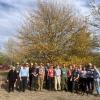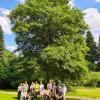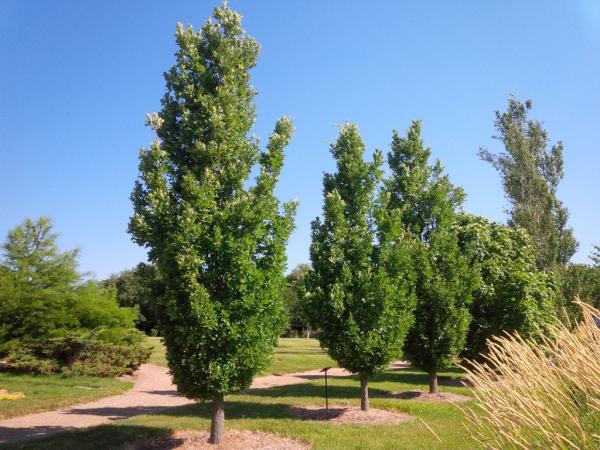Editor's Picks
Plant Focus
Part 1 (May 15 and 16)
by Danielle Castle
International Oak Society (IOS) and the New Zealand Farm Foresters Association (NZFFA) teamed up for an excellent four days of Quercus fun at the New Zealand Oak Open Days! The group explored arboretums and gardens of Aotearoa’s1 east coast in the Hawkes Bay and Gisborne regions. One may think NZ is an unusual pick to host an oak event, given the country extends beyond the reach of the oak’s native range. However the group was soon presented with an astounding diversity of oak woodland species from throughout the world. And they are thriving!
Day 1, May 15: Napier with David Cranwell, and Gwavas
David Cranwell was the first to greet the group on Day 1, and he showed off the versatile utility of the Himalayan (a.k.a. “banj”) oak (Quercus leucotrichophora) around Hawkes Bay. David has been the main driver behind the Himalayan Oak Trust, with the goal of restoring woodlands in northwest India that have been severely depleted by over-extraction. Introducing the species into New Zealand in the early 1990s, David has demonstrated this oak has incredible potential for a variety of applications in Aotearoa as well.

So why plant a Himalayan oak in New Zealand? Well, it turns out the tree is a jack-of-all-trades. The evergreen Himalayan oak has a relatively rapid growth rate and deep root structure, which makes it a potentially useful erosion control species. Adjacent to David’s apple orchard, a 20-year-old tree has reached 25 cm dbh and 10m in height, while an 18-year-old tree at the Bostock winery grew to a whopping 61cm dbh at 19m in height under pampered conditions. Surprisingly, despite this fast rate of growth, it produces a tightly grained, dense wood, so the wood product utility is being explored.

In a horticulture environment, the tree has proven itself useful as a hedgerow species around kiwifruit (Actinidia chinensis var. deliciosa) orchards, taking the strength out of the wind but still permitting airflow, which minimises fungal infections on leaf material. Speaking of fungi, the Himalayan oak has shown promising signs of truffle inoculation uptake (Tuber melanosporum, a good fungus). And to top it off, it’s a handsome tree! Bostock winery has incorporated these trees as a feature across their manicured estate.
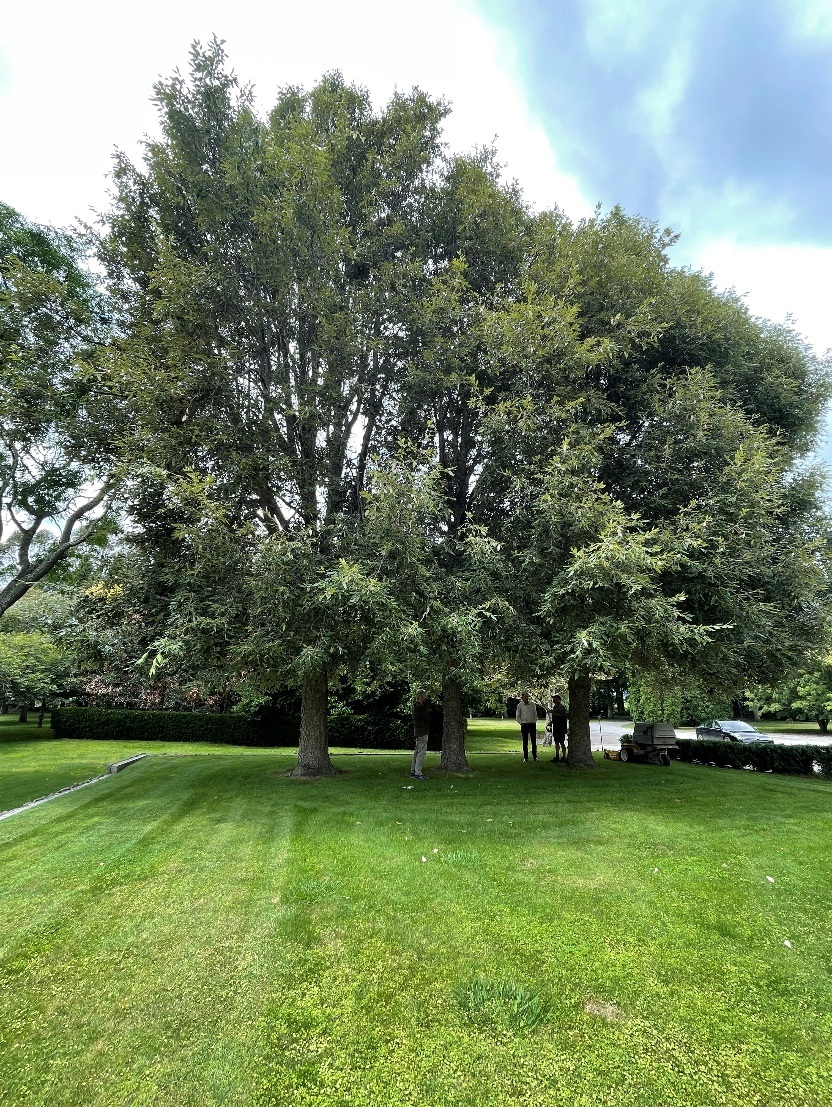
All funds raised from tree sales and donations to the Trust have gone back to help support local schools in Ranichauri village to help teach the importance of woodland conservation and reforestation. The more trees the village plants, the more support they receive from the Trust. At this point, more than NZ $200,000 have been raised for the schools and tree plantings in northern India. For his incredible efforts and success, David has received an IOS Service Award in 2022.
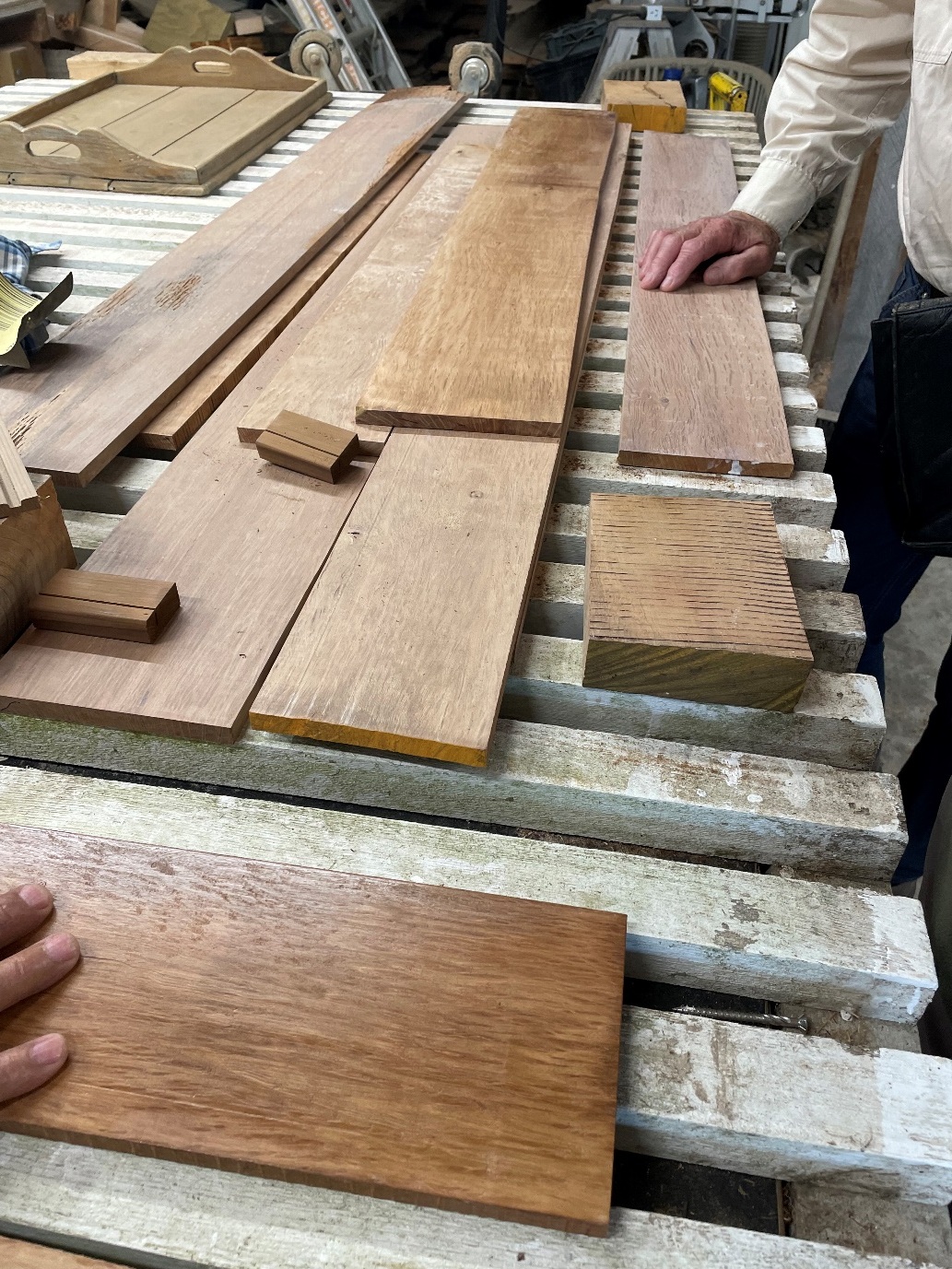
After admiring the Himalayan oaks, the group was welcomed to the Gwavas Homestead Garden by Phyllida and Stuart Gibson. Today we can thank the foresight of their predecessors on this property because the trees selected were brought into New Zealand in the mid to late 1800s, meaning the trees standing today are the original genetic stock sourced directly from the trees’ native lands. The family has carried on the tradition to develop and maintain the garden as a natural woodland with a light touch. On top of the work that goes into the gardens, Stuart and Phyllida have taken the time to quiz their elders and create an extensive database that identifies every tree on the property. Over 9 hectares, there are thousands of trees and records, which is an incredible feat.
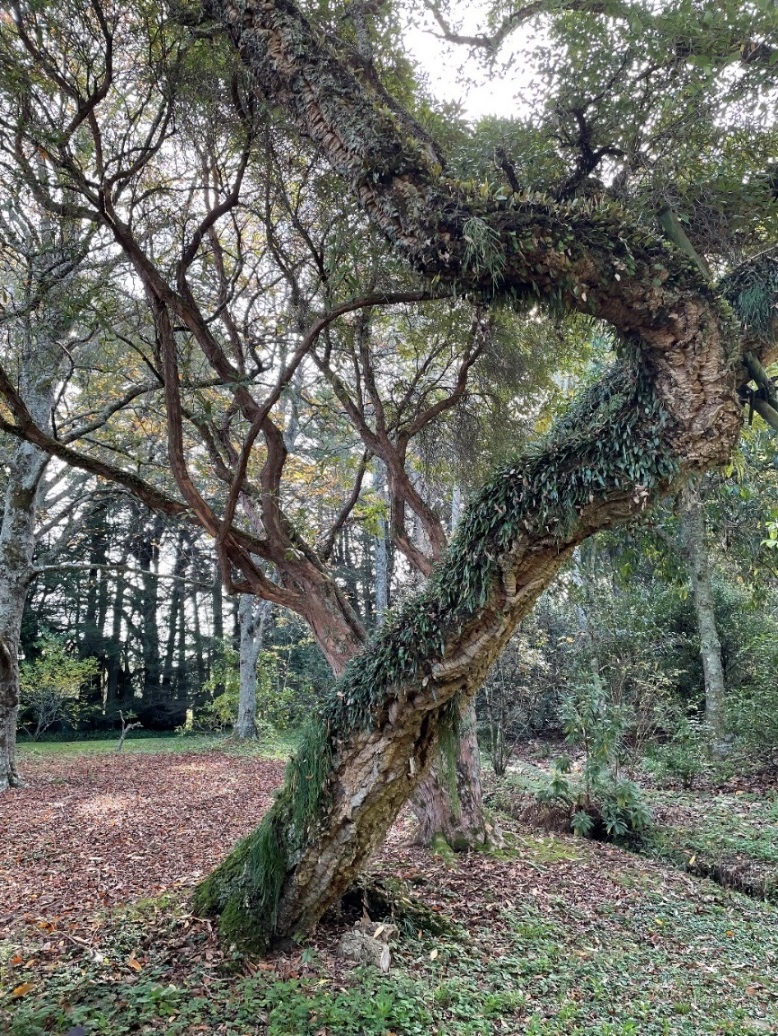
Some of the species featured included: Q. acutissima, an Asian oak with unique acorn cap of hairy bristles; Q. dentata, a species native to Japan that has large deciduous dentate leaves; an impressive Q. suber (cork oak) that was planted in 1894; Q. bambusifolia; Q. ilex; and the baffling Q. fleuryi that looks more like a tropical house plant (the accepted name is now Q. macrocalyx, which makes sense when you look at pictures of its ridiculously large acorn calyx—not observed at Gwavas).

The gardens of course were filled with other beautiful specimens of non-oaks of which we will not speak their names except for an honourable mention of the Cornus wilsoniana because of its uniquely impressive ghostly green dogwood bark.

Day 2, May 16: Guthrie-Smith Arboretum
The second day of oak-seeking commenced at the Guthrie-Smith Arboretum in Tutira, hosted by George Christison, General Manager. The Arboretum was beautifully designed, broken out into global regions so one got the sense of walking through habitats on different parts of the planet. The acorns were dropping, and some trees had a healthy recruitment of previous years’ oak seedlings coming through. The woodland areas were well labelled with aluminium tags on posts near the trees.

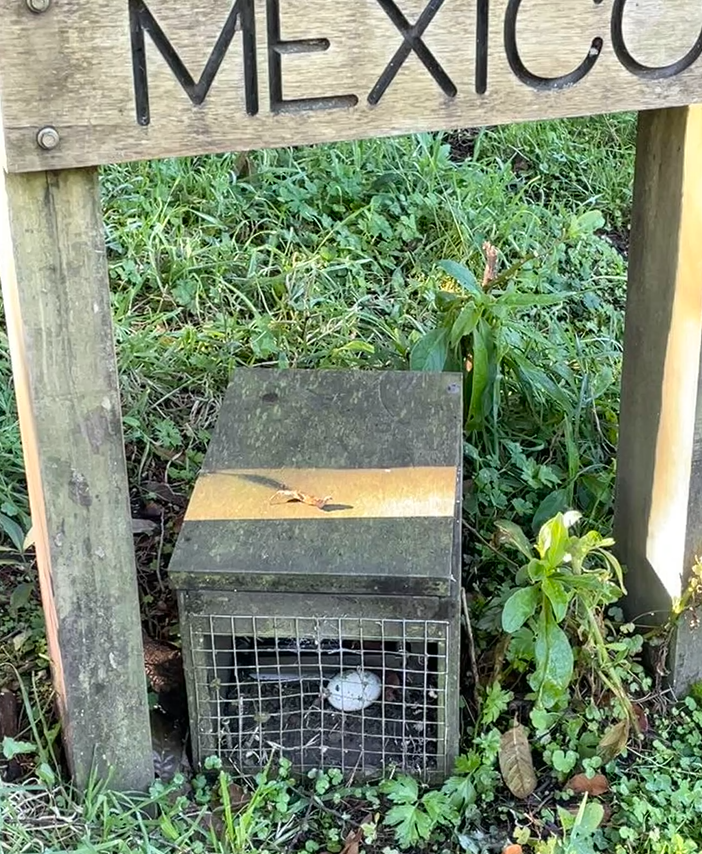
What truly stood out on the property is the good land stewardship that George is undertaking on the property. They have active pest management in place, which is one of New Zealand’s largest challenges for managing and maintaining native forests. Traps set for possum, stoat, rats, and other invasive mammals were noted around the trail systems. The Arboretum supports kids’ education with outdoor school programmes, as well as research by partnering with NZFFA to collect growth data on oak tree development (a project led by Eric Cairns; further details will be published in the report of this event in the IOS Journal).
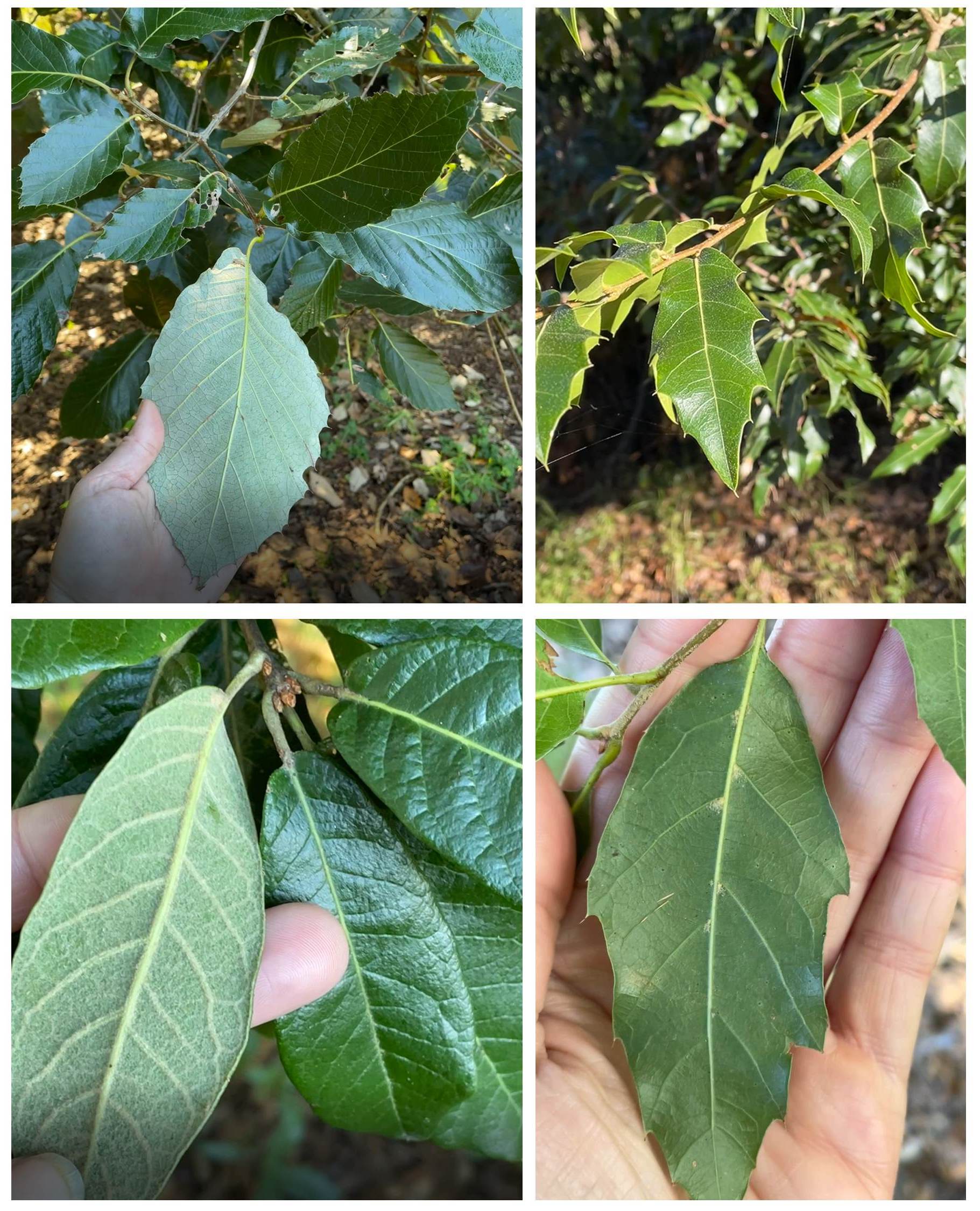

A property of pastoral land a few kilometres to the north of the Guthrie-Smith Arboretum has been acquired recently and is managed by George. In it they have developed a beautiful constructed wetland that will improve wetland habitat, allow fish passage, and filter water prior to discharging into Lake Tutira. Surrounding the wetland basin, George is actively planting and maintaining a wide variety of tree species on erodible hill country, all within the past few years.
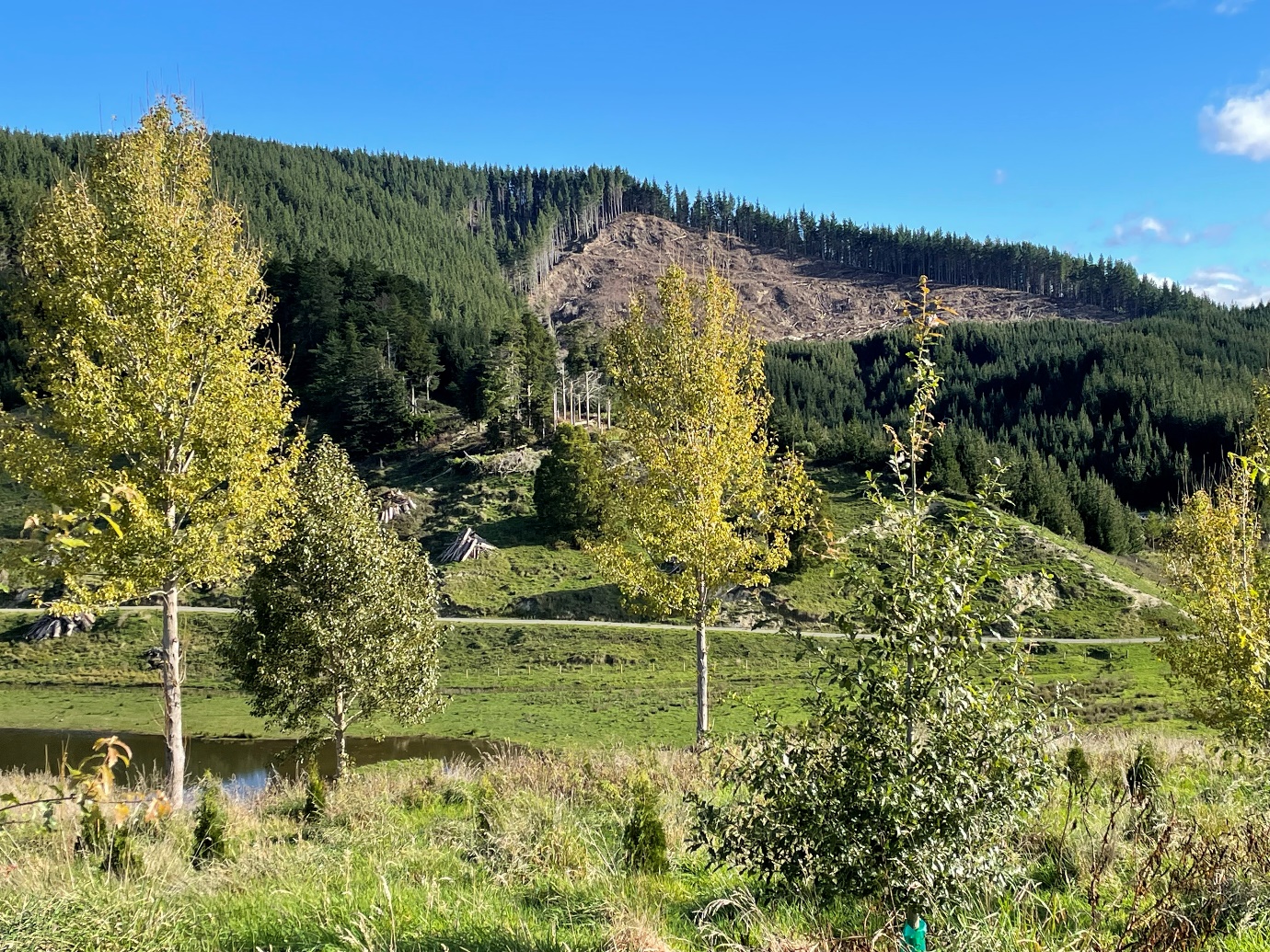
One of the challenges with forest establishment is weed control, which includes spraying for blackberry (Rubus fruticosus), one of their more formidable foes. Their hill country trees include several oak species, as well as indigenous plants, and a variety of exotic trees such as pomegranate (Punica granatum), poplars (Populus spp.), cedars (Cedrus spp.), Podocarpus macrophyllus, and others.

The vision and active management on the property is an immense amount of work and is truly praiseworthy. The freshly planted hills will be gratifying to watch over time to see the forest grow and thrive for future generations.

Part 2 (May 17 and 18)
by Kathryn Hurr
The final leg of the Oak Open Days took us north up the East Coast to Gisborne—first city to see the sun and home to two of the best collections of oak in New Zealand: Hackfalls and Eastwoodhill.
Day 3, May 17: Hackfalls Arboretum
Hackfalls is situated on an 800-hectare working sheep and cattle farm in Tiniroto—a remote hill country settlement between Gisborne and Wairoa. It is home to the largest collection of Mexican oak species in the Southern Hemisphere. Developed by the late Bob Berry, the arboretum also includes significant collections of alders, cherries, magnolias, maples, and other temperate taxa, many of which were established from wild-collected seed.
Bob began curating the 56-hectare arboretum in the 1950s and soon recognized the area was well suited to Quercus. The Mexican oaks became a central focus after his first botanical recce to Mexico in 1981 and he made five further expeditions over the next decade including a 1989 visit to Veracruz, where he located Quercus insignis with the largest acorns of any oak—Bob’s personal favorite.
Bob Berry’s lifelong contribution to dendrology and plant introduction has been widely recognized. In 2012, he received the Lifetime Service Award from the International Oak Society, followed in 2015 by the Veitch Memorial Medal from the Royal Horticultural Society—an honor reserved for those who have advanced the science and practice of horticulture on a global scale.
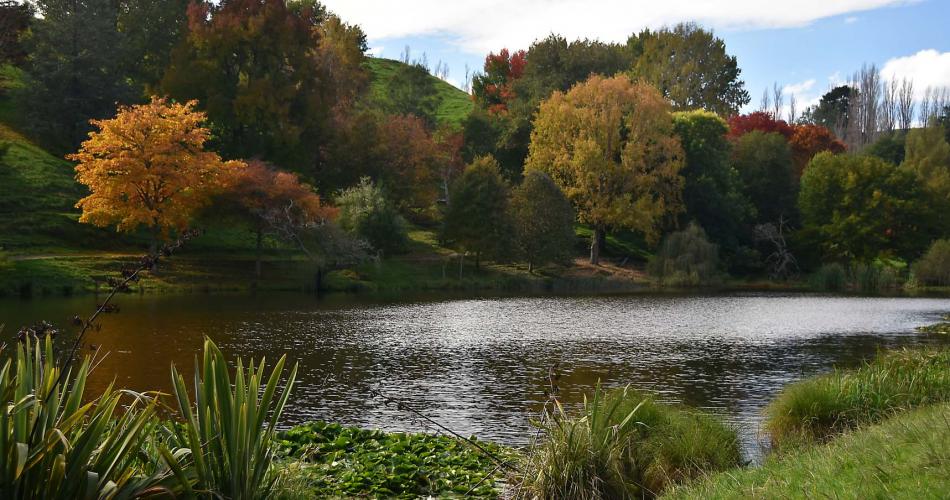
The visual centerpiece of the arboretum is Lake Karangata, a 10-hectare body of water framed by over a thousand trees. The day we visited was a clear autumn day, crisp in the morning and warming to a hot sunny afternoon. Much of the early autumn color had already passed, but some oak and the ginkgos were still prominent and a few others were just beginning their seasonal turn, casting reflections on the lake.
We started the day by examining a collection of different leaf samples collected by Eric Cairns demonstrating the enormous variability in some of the species, complicated further by hybridization.
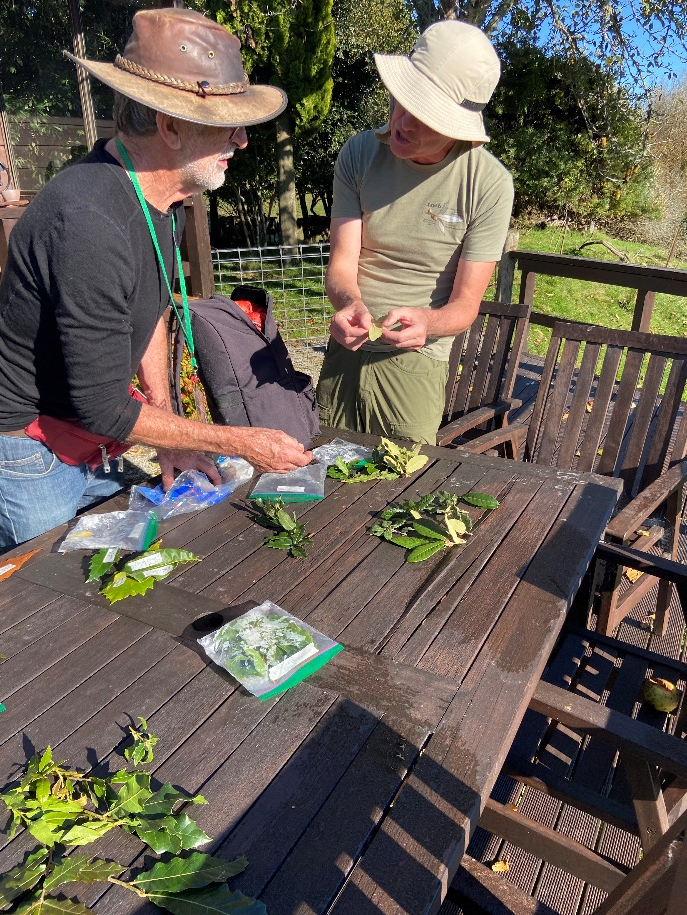
Our guide for the day was Menno Kleutiers, a professional climbing arborist who has worked at Hackfalls for the past four years on tree maintenance and canopy care. Menno organizes the annual Arbor Camp at the arboretum—a hands-on event where young climbing arborists put new climbing and rigging techniques into practice while carrying out structural pruning and other specialized work to maintain the health, safety, and longevity of the Arboretum’s veteran trees.
Menno spoke about the evolving philosophy in arboretum curation. Many arboreta historically planted oaks as isolated specimens, or dotted them in different places to ensure at least one grew in a favorable site. As we know, isolated trees then self-pollinate and don’t produce vigorous progeny, hybridize freely, or don’t produce acorns at all. This presents both opportunities and challenges—opportunities for the development of new and interesting hybrid landraces but also challenges for the preservation of species that are becoming increasingly rare in the wild. Progressively, arboreta are moving towards the establishment of breeding populations, as we saw at Guthrie-Smith Arboretum.
The tour started on the northern side of Lake Karangata, where we admired the marcescent leaves on the daimyo oak, Q. dentata, and then stopped to measure the standout Q. crassifolia that was planted in 1984. Roderick thinks it may be the largest specimen of this species in cultivation, and it measured 86 cm diameter and 26.5 metres tall.
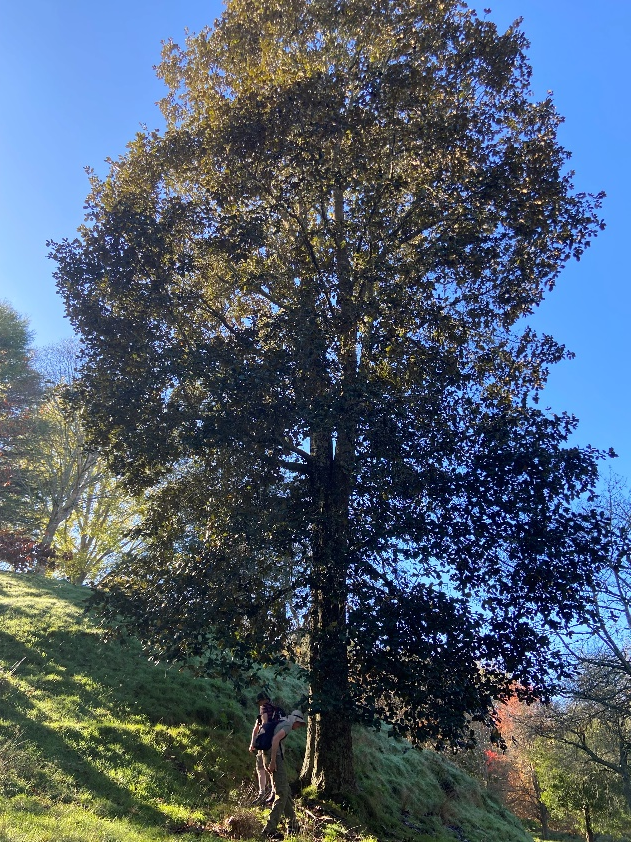
Most of the trees at Hackfalls are well labelled which makes tree hunting hugely satisfying!
The lower track sweeps around the edge of the lake with plenty of large trees to appreciate, and for the fitter and more adventurous, there are many more planted on the slopes and hills above the lake for those inclined to go searching further afield.

After lunch, we moved to the Southern side of the Lake, walking through a diverse collection of birch (Betula spp.), oak, maples (Acer sp.), and the largest specimen at Hackfalls of the American white oak, Q. alba.
Heading towards the main area of Mexican oaks, we stopped to admire a ring-cupped oak, Q. rex, with its large, heavily veined leaves, growing spectacularly well. Native to China, it grows in humid forests and is now endangered due to habitat disturbance.2 The Hackfalls tree is the only known mature specimen in New Zealand, and it failed to set seed again this year. It is a priority for grafting—which redoubled the group’s effort to find Q. lamellosa acorns which might be a suitable rootstock to grow on for this purpose.

Further along the track, we came to the largest of the three Q. insignis. They continue to flourish but are shy to fruit. Some commented it produces acorns toward the top of the tree and suggested that shading from surrounding trees is limiting flowering. Eric Cairns successfully grafted this specimen and gifted the trees back to Diane Playle of Hackfalls for further plantations at the arboretum.
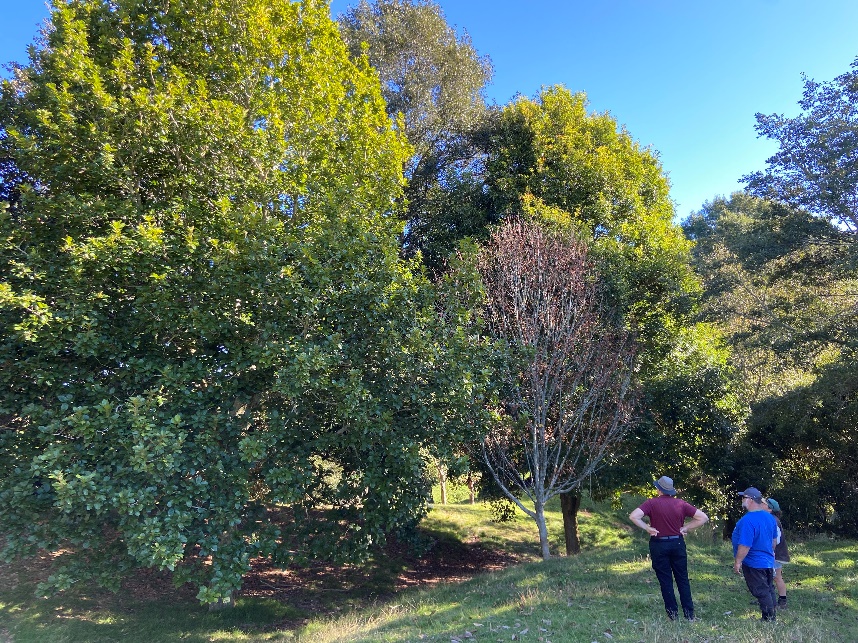
Nearby the Q. insignis are the monsters of the oak forest here—the Q. panduriformis (a synonym of Q. obtusata) and Q. ×dysophylla. While we didn’t measure these again on the day, they are significantly huge trees in the landscape and demonstrate how fast Mexican oaks can grow in regions with good rainfall.
Another shy-seeder missing acorns again this year was the swamp chestnut oak, Q. michauxii, another contender for conservation by grafting in New Zealand. There are only a few specimens at Hackfalls, and one of the three trees at Eastwoodhill arboretum was lost in winter storms last year.
With the temperatures starting to drop and the light beginning to fade, we packed up the day and drove an hour back to Gisborne in good spirits, meeting for an evening meal and craft beers at Sunshine Brewery.
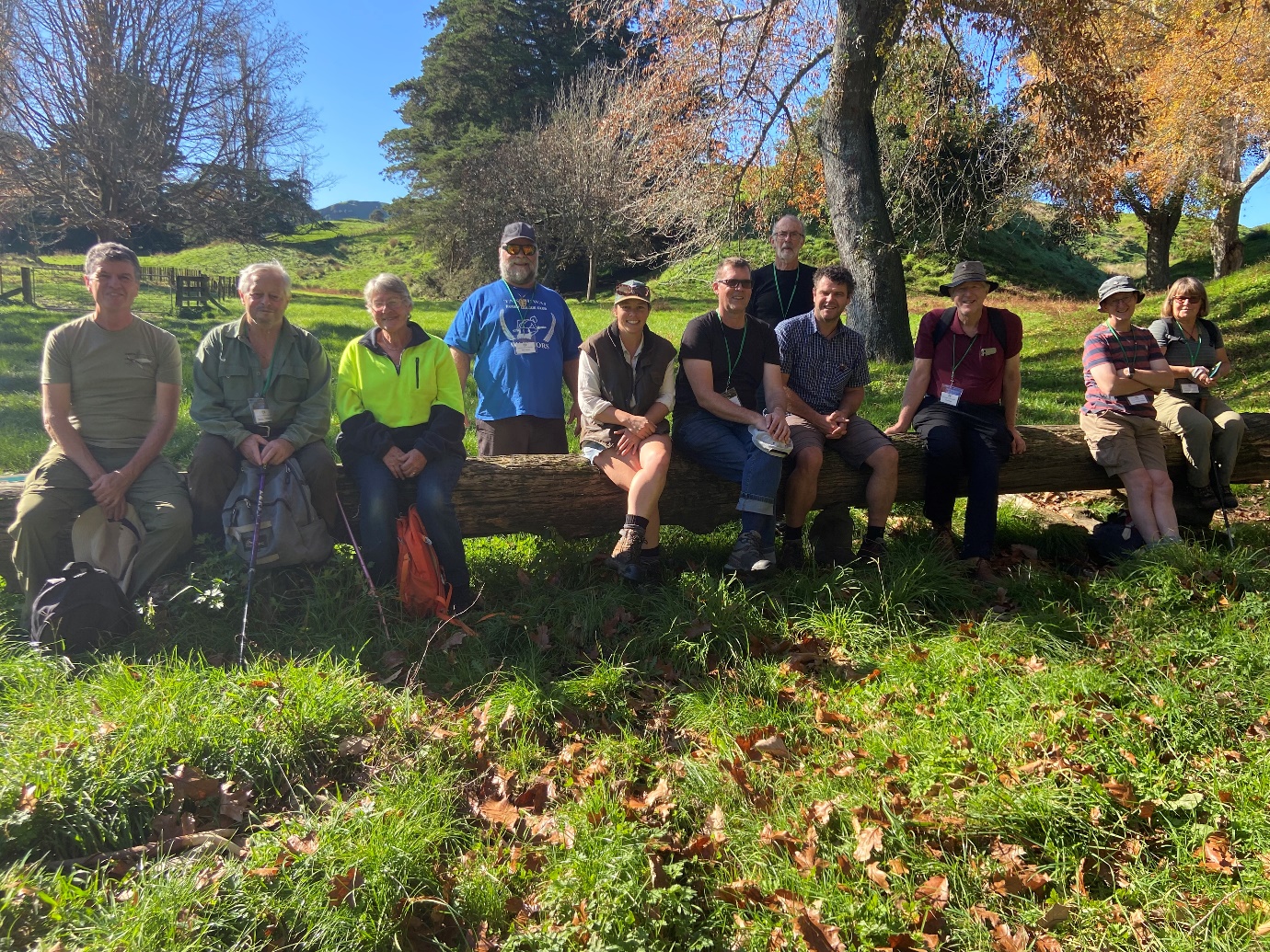
Day 4, May 18: Eastwoodhill Arboretum
We visited New Zealand’s National Arboretum, Eastwoodhill, on the last day of the tour. Only 30 minutes out of Gisborne in the hills of Ngatapa, Eastwoodhill has over 4,000 trees from the Northern Hemisphere, including over 100 species of oak. Douglas Cook acquired the 250-ha allotment by ballot in 1910 and began planting, first an orchard and practical farm trees, then ornamental species. With the advent of the Cold War, Cook thought of his arboretum as an “arboreal ark”, a way of preserving Northern hemisphere plants that might otherwise be lost in a nuclear holocaust. Today, the collection includes 170 plant species now on the IUCN endangered list.
Tree labels are relatively sparse, but the arboretum uses a peg-and-numerical code system linked to a GIS database—provided the grazing sheep haven’t nibbled off the tags!

Menno Kluiters was our guide for the day again, having just taken on the role of Curator. He led us past the heritage gardens surrounding the historic Eastwoodhill homestead and into the arboretum proper. A network of color-coded trails wind through the hilly terrain, punctuated by lakes, seating areas, and gazebos to help visitors navigate their way through the collection.
After a short walk to the first lake, we stopped to check on the post oak, Q. stellata, which is very rare in New Zealand and reluctant to produce acorns in most years. To our delight, we found more than a dozen acorns on the ground—some already germinating—and these were carefully collected with the aim of returning seedlings to establish a future breeding population for the arboretum. The post oak with its potential for ground-durable timber could prove to be a valuable species for New Zealand, particularly for vineyard and farm infrastructure.

After Cook died in 1967, Bob Berry began a weekly visit to help name and catalogue the trees. He expanded the oak collection with many of the Mexican species he collected in the 1980s, so that Eastwoodhill includes a good collection of these as well.

Among the standout Mexican species is the striking loquat-leaved oak, Q. rysophylla. The Arboretum has only a single specimen, which cross-pollinates with several different species in its surrounding, producing progeny with a huge range of variation.
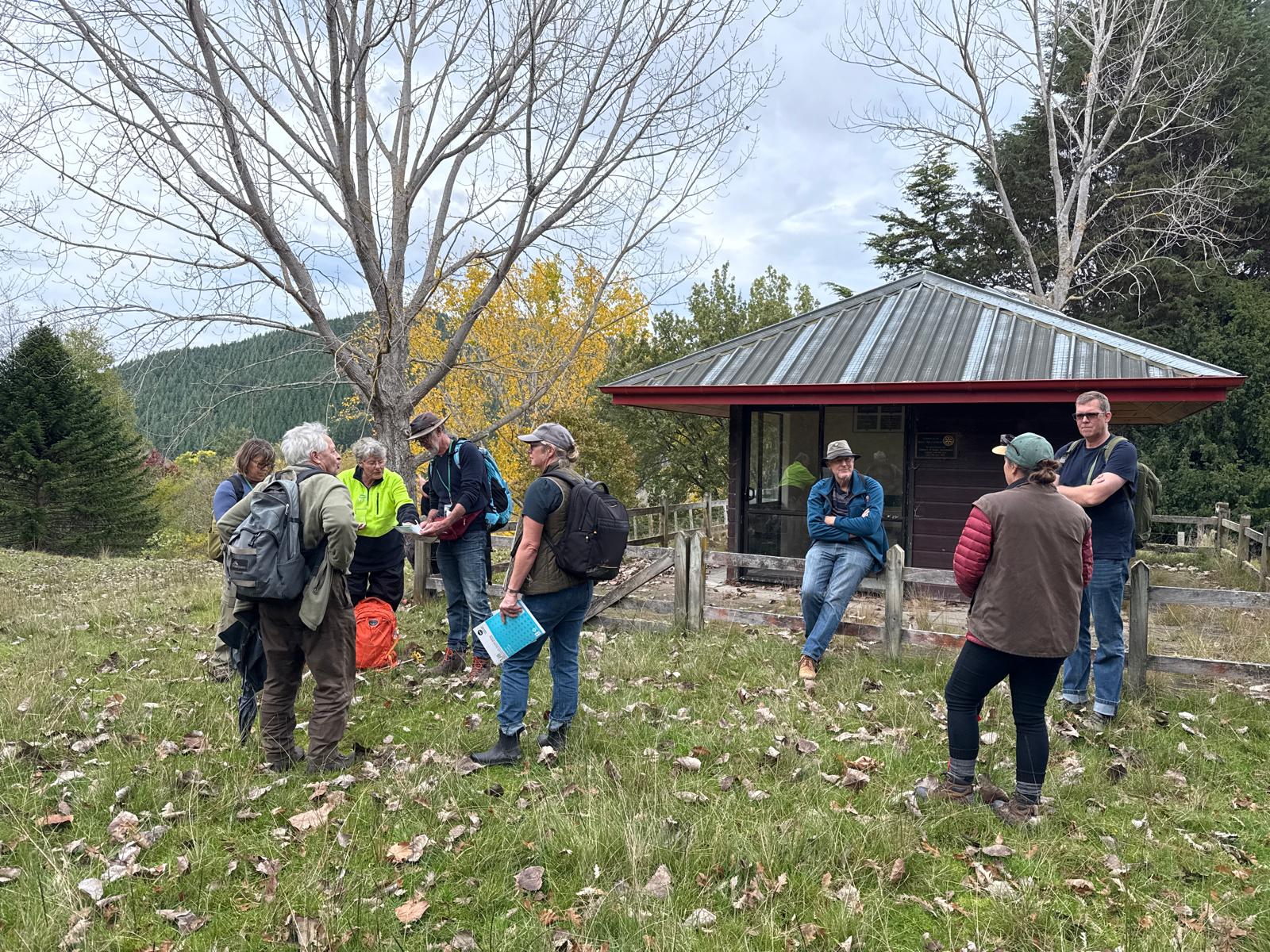
Lots and lots of amazing trees later, we came across Jasper Murphy demonstrating traditional greenwood turning techniques beneath a birch tree (Betula sp.) in his open-air workshop. Using a foot-powered pole lathe, Jasper skillfully turned fallen oak branches into bowls and cups and finely crafted furniture.
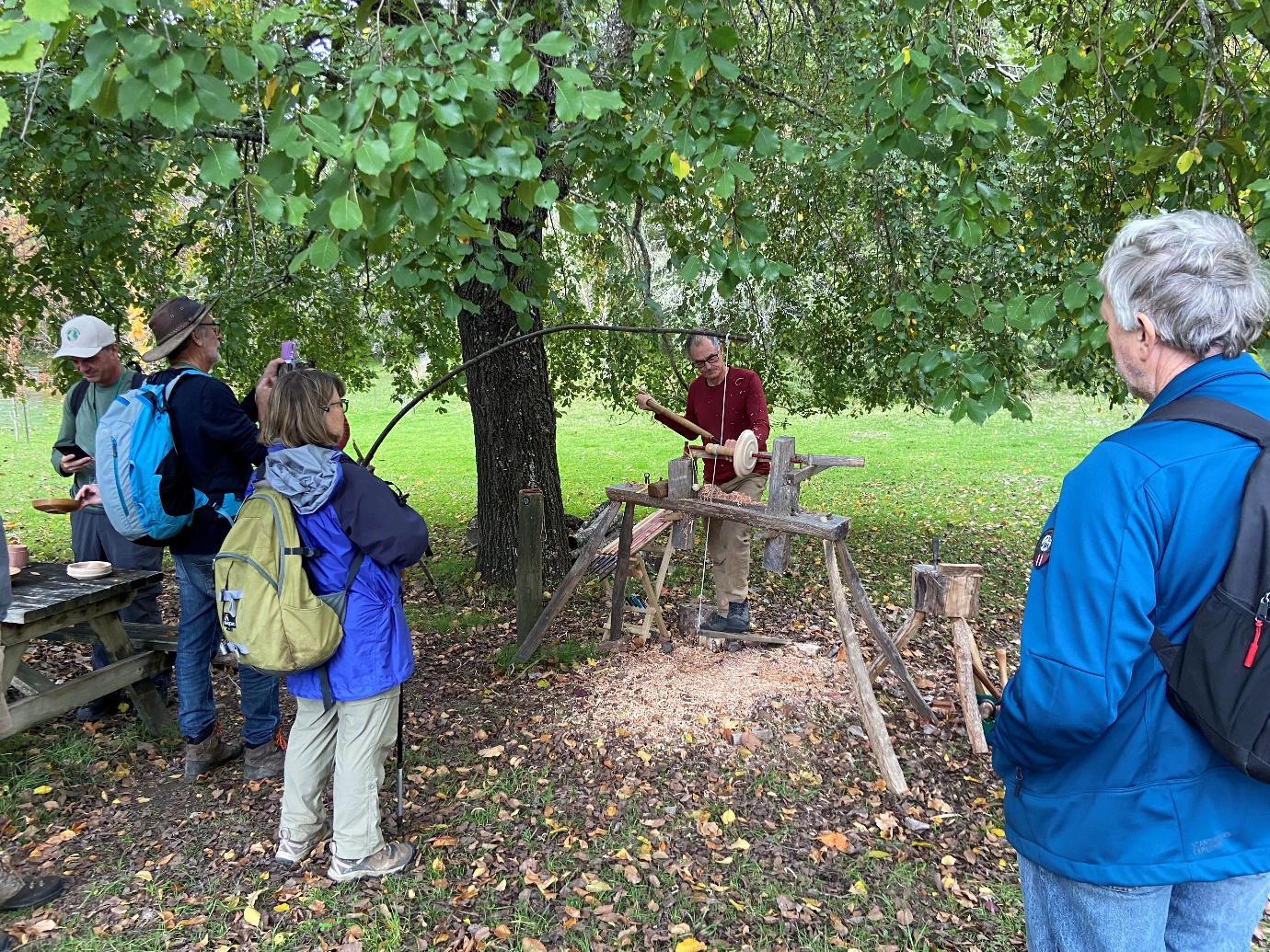
As the day drew to a close, we travelled back to Gisborne for our final gathering: a warm, lively dinner at Knapdale Eco Lodge, graciously hosted by Kees and Kaye Weytmans. The evening opened with Eric Cairns holding Rick Jobbitt’s whanau “talking stick”—a beautifully crafted stick inlaid with wood of many different tree species.3 Eric gave a well-researched presentation on oak wood properties and post-drying stability, using some examples of Mexican species he has worked with. He spoke about the potential to develop New Zealand-adapted landraces of Mexican oak hybrids for timber production—there is still much research needed to explore this potential.
We were also joined by Pat and Nick, with Pat—a former city councillor—sharing insights into the region’s unique geography, climate, and economic history. Pat spoke about the impacts of successive cyclones, the use of pine plantations to control erosion, and the challenges posed by slash and forestry debris, particularly during Cyclone Gabrielle.
Dinner was exceptionally good and very well appreciated. Afterwards, Rick passed the talking stick around the table. One by one, each reflected on their insights and meaning from the weekend—what we had learned and what we hoped to carry forward. The evening ended on a high note, with warm promises to stay in touch.
1 Aotearoa is the Māori name for New Zealand.
2 It is nevertheless listed as of Least Concern on the IUCN Red List of Threatened Species. For more information, see Li, Q., Deng, M., and Gu, M., “Quercus rex: Distribution, Status, and Conservation”, International Oaks No. 32: 89–96 [link]
3 A talking stick, also known as rakau korero in Māori, is a cultural artifact used to facilitate respectful communication and ensure that everyone in a group has a chance to speak. Whanau means extended family or family group.

